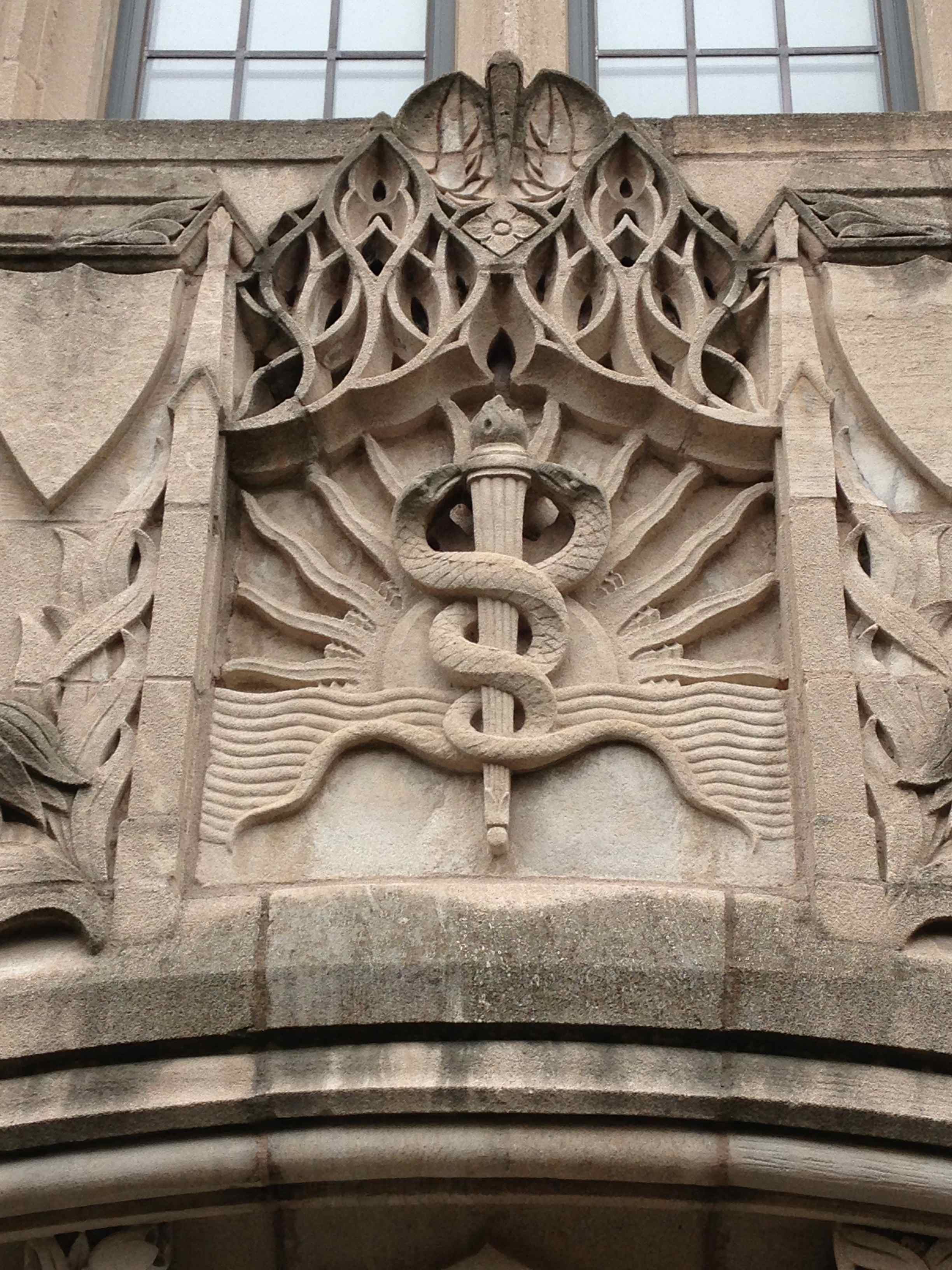Ah yes, the rod of asclepius, the ancient greek god of healing. Asclepius, the greek god of medicine, carried a rod with a single snake, which became a medical symbol from the fifth century bce.

Mystery Monday stone serpents Daily Snap Yale Alumni
The birth of medicine in mythology.

Greek symbol of medicine. ⚕️ can be used for all forms and types of medication and healing; Greek mythology symbols revolve around gods, heroes, and rituals that the ancient greek followed and most of these were considered to be true. The rod of asclepius (or staff of asclepius) is an ancient greek symbol that has become an internationally recognized symbol of medicine.
Apollo (greek, απολλων) was not only revered as god of medicine but also god of the sun, prophesy, harmony, music, and art. For centuries, greek tales and tragedies have enchanted the world and this continues to be the case. Both mainstream and alternative/niche aspects.
It’s a prominent symbol of medicine. The rod of asclepius embodies one snake with no wings whereas caduceus is represented by two snakes and a pair of wings depicting the swiftness of hermes. The cup with a snake is known as the bowl of hygieia and has become the symbol of pharmacy in most western countries, where it identifies pharmacists and stores selling medication.
One staff, with two snakes entwined around it… except that symbol is not the rod of asclepius at all. Another, earlier depiction of the medical symbol is the staff of asclepius, thought it has no wings and only one snake. This symbol is used today in the context of medicine and healthcare and is often found on logos and badges of medical departments.
The snake itself as a symbol of health and medicine likely has ties to egyptian culture, as discussed above. It depicts a serpent entwined around a staff that is traditionally a knotty tree limb. Due to this symbolism, physicians in ancient greece would use nonvenomous aesculapian snakes (named after this mythological god) in healthcare rituals, often leaving them to slither the floors near sick patients.
The rod of asclepius is a single serpent entwined rod wielded by the greek god of healing and medicine, asclepius. Hope hygieia, 2nd century ad roman copy of greek original, c.360 bc, los angeles county museum of art. However, it is frequently confused with caduceus , which was a staff wielded by the god hermes.
The snake figure was associated with asclepios, the ancient gre. In greek mythology, the rod of asclepius (greek: We investigated the meaning and the roots of the snake's usage as a symbol of medicine, the medical profession, toxicology and toxinology by examining mythological, archeological data and a variety of texts from the ancient greek world.
The messenger of the gods, hermes (the roman god mercury), acquired an extra snake on his staff, known as a caduceus. It originates from the story of asclepius, who was revered by the ancient greeks as a god of healing and whose cult involved the use of snakes. With that comes symbols and provenance.
He is the son of apollo, the physician. The c aduceus (☤) is the traditional symbol of hermes and features two snakes. Since ⚕️ has a heavy reference to greek mythology, you could use this emoji in general contexts either about or referring to the greek myth.
The true and authentic symbol of medicine is not the caduceus but the rod of asclepius. The rod of asclepius is a universal symbol for medicine to this day. Although the caduceus is considered more popular, it’s the rod of asclepius that’s the true symbol of medicine.
The staff with the snake has long been a symbol of medicine and the medical profession. It’s perhaps not a coincidence, then, that the element mercury was a major chemical agent in. The original symbol which is related to medical sciences is rod of asclepius which belongs to greek god asclepius.
This caduceus was commonly but erroneously used as the symbol of medicine. Greek mythology symbols remains one of the most popular and epic mythologies in existence today.